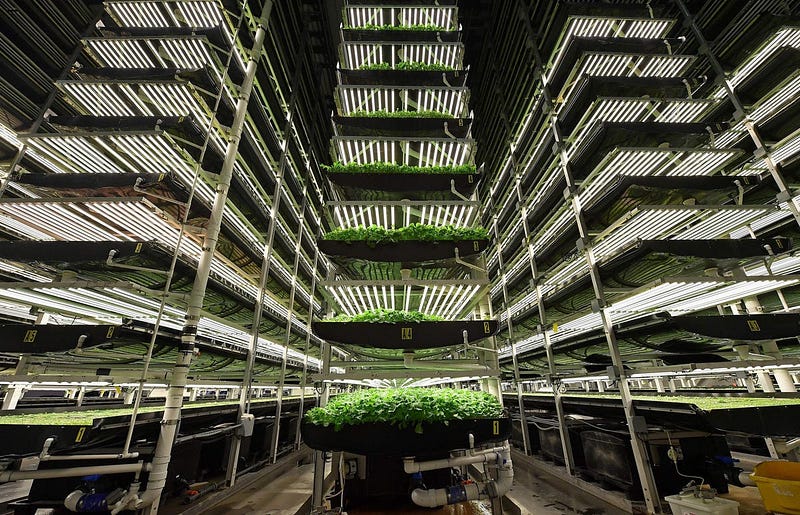Exploring the Viability of Vertical Farming: A Critical Look
Written on
Chapter 1: The Promise and Peril of Vertical Farming
Vertical farming has emerged as a buzzword in discussions surrounding sustainable agriculture. The concept involves cultivating crops indoors, utilizing soil-less mediums, and employing advanced automation for planting and harvesting, all while striving for minimal waste. This vision is alluring, especially as some of our key agricultural areas are under threat. However, as we delve into the realities of vertical farming, we encounter a blend of optimism and caution, reminiscent of Dr. Ian Malcolm's warnings about overconfidence in the face of nature, alongside Thucydides’ description of hope as a “comforter of danger.”

As we navigate this landscape, it's essential to recognize the disconnect many industrialized nations feel from the natural world. While we communicate more through screens, our understanding of nature has diminished. This detachment leads us to overlook the invaluable contributions of the sun, which not only provides light but also fuels our agricultural systems.
Section 1.1: Rethinking Indoor Agriculture
While I am not wholly opposed to the idea of indoor or vertical farming, I believe that its potential benefits are often overshadowed by the pitfalls of its funding structures. The current model relies heavily on venture capital, which demands significant returns and, consequently, grand promises.
One of the most exaggerated claims is that vertical farming can effectively resolve the land and water crises faced by regions like California's Central Valley. These assertions often suggest that vertical farms can dramatically cut resource use—claiming they need 95% less water and 99% less land than traditional farms. However, this optimistic outlook fails to recognize that plants have needs beyond just land and water.
Subsection 1.1.1: The Scale of the Challenge
To illustrate, the Central Valley has approximately 7 million acres of irrigated land, equating to around 300 billion square feet. Even if vertical farms could hypothetically grow all the produce from this region using only 1% of the space, they would still require extensive energy inputs to illuminate the remaining area.
For instance, lettuce cultivation demands about 3.5 megawatt hours per year per square meter. To match the output of the Central Valley, vertical farms would need to cover around 28 billion square meters, translating to an astronomical 98 million gigawatts annually. Assuming these operations rely on solar power, we would require about 275 million acres of solar panels to meet energy needs—significantly more land than what is used for the Central Valley itself.
Chapter 2: The Reality of Resource Efficiency
This stark reality highlights a critical flaw in the vertical farming narrative: traditional farms utilize 97% less land than their vertical counterparts due to their direct access to solar energy.

Food production fundamentally involves converting solar energy into biomass. By transitioning this process indoors, we face a convoluted engineering challenge: how to replicate the sun's energy rather than harnessing it directly.
Section 2.1: People Over Profits
Beyond the technical challenges, we must consider the socio-economic implications of vertical farming. The current agricultural system is heavily influenced by capitalist motives, often prioritizing profit over people. This approach leads to systemic issues, including food waste and global malnutrition.
The root of these problems lies not in land or water usage but in the structure of our food supply chains, which favor agribusiness interests over genuine community needs. As vertical farming gains traction, it often serves as a new frontier for profit rather than a solution to existing agricultural challenges.
The first video title is "Are Vertical Farms The Future Of Agriculture?" - YouTube. In this video, experts discuss the potential advantages and drawbacks of vertical farming and its place in future agricultural practices.
The second video title is "The EPIC Failure of Vertical Farms - What Happened?" - YouTube. This video explores the challenges faced by vertical farms and why many have not lived up to their promises.
Chris Newman, founder of Sylvanaqua Farms and other initiatives, emphasizes the need for a reevaluation of our food systems. Supporting equitable access to fresh produce should be our priority, rather than yielding to the allure of high-tech solutions that may not deliver on their promises.